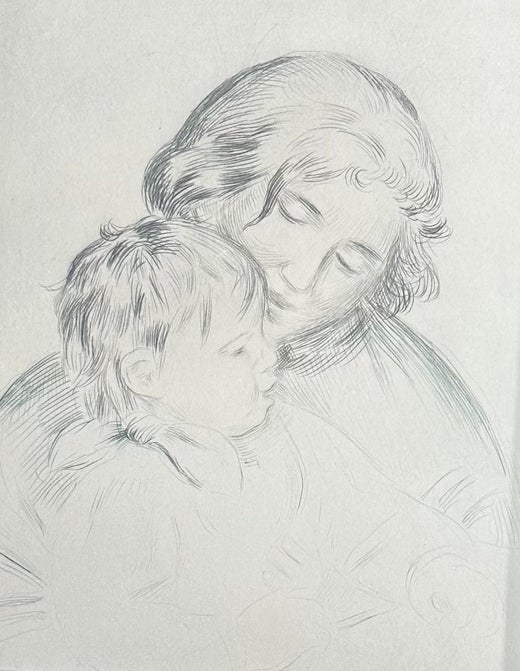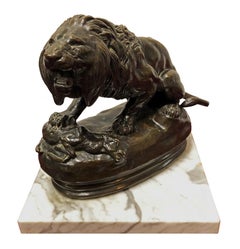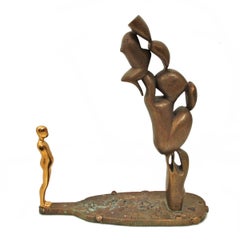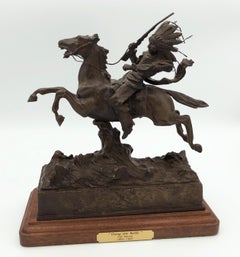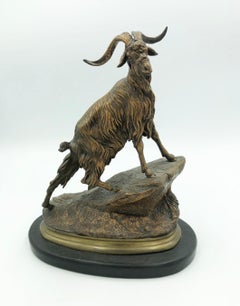Video Loading
Want more images or videos?
Request additional images or videos from the seller
1 of 7
Pierre Auguste RenoirWoman with Tambourine
$4,500List Price
About the Item
- Creator:Pierre Auguste Renoir (1841 - 1919, French)
- Dimensions:Height: 29.5 in (74.93 cm)Width: 17.75 in (45.09 cm)Depth: 1.25 in (3.18 cm)
- Medium:
- Movement & Style:
- Period:
- Condition:
- Gallery Location:Missouri, MO
- Reference Number:1stDibs: LU747311446452
Pierre Auguste Renoir
Pierre-Auguste Renoir had his first experience with art in 1845 at the age of 4 when his family moved to Paris from Limoges and settled near the Louvre. By the age of 13, he had begun to seriously study and practice his work. Renoir started as an apprentice painter in a porcelain factory, where he spent five years. He then took drawing lessons from Charles Gleyre and in 1862, when he was 21; Renoir attended the Ecole des Beaux-Arts. It was at the National School of Fine Arts in Paris where Renoir met the future founders of Impressionism, Claude Monet, Alfred Sisley, and Frederic Bazille. Renoir paintings remained in the traditional style during the 1860s. His portrait of his mistress, Lise Trehot, was traditional enough to be accepted for the 1867 Salon. Pierre Auguste Renoir’s paintings began to change shortly after he moved in with Claude Monet and Frederic Bazille in 1869. Renoir updated his technique and color scheme. Renoir painted mostly outdoors and began to use vibrant, pure colors and little brush strokes. Renoir, along with Claude Monet, Camille Pissarro, and Alfred Sisley was part of the first exhibition of the Society of Independent Artists in 1874. It was at this exhibit that the term “Impressionism” was first used. The term was coined by a French art critic who took the name from a Monet painting. The term was meant to be derogatory and the show was a financial failure. Despite the failure, the artists continue to exhibit together and were joined by Edgar Degas and Georges Seurat. By the early 1880s, the public had begun to recognize the importance of the Impressionists’ work. In the early 1880s, Renoir traveled and painted extensively. He held his first one-man exhibition in 1883 in Paris. He received commissions from prominent Parisians and painted numerous group portraits of his friends, writers, and fellow artists. By 1887, Renoir was famous and donated several paintings to Queen Victoria for her Golden Jubilee. By the time he was 50, Renoir’s health began to decline. He suffered from cataracts, rheumatoid arthritis, and ankyloses, and spent the last twenty years of his life confined to a wheelchair. During this time he continued to paint and even took up sculpting.
About the Seller
5.0
Vetted Professional Seller
Every seller passes strict standards for authenticity and reliability
Established in 1970
1stDibs seller since 2017
155 sales on 1stDibs
Typical response time: Several days
Authenticity Guarantee
In the unlikely event there’s an issue with an item’s authenticity, contact us within 1 year for a full refund. DetailsMoney-Back Guarantee
If your item is not as described, is damaged in transit, or does not arrive, contact us within 7 days for a full refund. Details24-Hour Cancellation
You have a 24-hour grace period in which to reconsider your purchase, with no questions asked.Vetted Professional Sellers
Our world-class sellers must adhere to strict standards for service and quality, maintaining the integrity of our listings.Price-Match Guarantee
If you find that a seller listed the same item for a lower price elsewhere, we’ll match it.Trusted Global Delivery
Our best-in-class carrier network provides specialized shipping options worldwide, including custom delivery.You May Also Like
Winning the Race Galloping Horse and Rider in Bronze by Charles Rumsey
By Charles Cary Rumsey
Located in Brookville, NY
Rumsey’s specialties included equestrian sculptures – portraits of polo players and prize horses, as well as of cowboys, cattle and horses as metaphors. He worked principally in bron...
Category
1910s American Impressionist Figurative Sculptures
Materials
Bronze
$4,000
H 9.5 in W 11.5 in D 3.5 in
The Old Virginian, Bronze of a Horse and Rider with Dogs by Charles Rumsey
By Charles Cary Rumsey
Located in Brookville, NY
From the estate of the Artist Charles Cary Rumsey
The Artist, Charles Rumsey, was a child prodigy sent to Paris as a young boy to study sculpture. He later was a world class sports...
Category
1910s American Impressionist Figurative Sculptures
Materials
Bronze
$12,000
H 16.5 in W 21.5 in D 6.5 in
Jockey Pipe Rack in Bronze A Bronze by Charles Rumsey
By Charles Cary Rumsey
Located in Brookville, NY
Charles Rumsey was a child prodigy sent to Paris to train in sculpting at age 12. He was not only a prodigy sculptor but an avid horseman and sportsman...
Category
1910s American Impressionist Figurative Sculptures
Materials
Bronze
$2,000
H 4 in W 12 in D 2 in
Medardo Rosso Gavroche or Mischievous Impressionist Bust in Bronze 20th Century
By Medardo Rosso
Located in Milano, IT
Medardo Rosso The Mischief or Gavroche Impressionist sculpture depicting a laughing little boy, the figure half-length of the laughing boy in the cap and the face turned to the lef...
Category
Early 20th Century Impressionist Figurative Sculptures
Materials
Bronze
$1,798
H 17.33 in W 10.24 in D 9.06 in
Girls Dancing
By Bessie Potter Vonnoh
Located in Bryn Mawr, PA
Best known for her sculptures of graceful female figures in gently sweeping garments, Bessie Potter Vonnoh initially trained under Lorado Taft at the Art Institute of Chicago. The 18...
Category
Early 20th Century Impressionist Figurative Sculptures
Materials
Bronze
Spring Song
Located in La Canada Flintridge, CA
Spring Song, Edition AP 1/5, signed.
Nobe's art is highly integrated, deeply sensitive, and provocative of thought in a manner seldom reached by the multi...
Category
2010s Impressionist Figurative Sculptures
Materials
Bronze
The forth Angel, Contemporary Angel, Angel Sculptor.
By Marsha Gertenbach
Located in La Canada Flintridge, CA
"Sculptor Marsha Gertenbach signed and numbered this bronze sculpture, edition 2/25. Here is the artist's message about this unique piece:
IT IS MY STRONG BELIEF THAT GOD HAS GIVEN ...
Category
2010s Impressionist Figurative Sculptures
Materials
Bronze
Soaring , Contemporary bronze sculpture.
By Marsha Gertenbach
Located in La Canada Flintridge, CA
Sculptor Marsha Gertenbach signed and numbered this bronze sculpture, edition 11/50. Here is the artist's message about this unique piece:
'I’ve often thought about what the experie...
Category
2010s Impressionist Figurative Sculptures
Materials
Bronze
Cutouts, 41" high bronze and stone bench
By Jane DeDecker
Located in Loveland, CO
"Cutouts" by Jane DeDecker
Figurative Bronze, 41x40x20" Sandstone bench is included.
A girl sits quietly unfolding her paper cutouts. Great piece for a...
Category
2010s Impressionist Figurative Sculptures
Materials
Sandstone, Bronze
Standing Together, 42" high bronze
By Jane DeDecker
Located in Loveland, CO
Standing Together by Jane DeDecker
Figurative Bronze. 42x24x24"
Sandstone base is included.
Two Girls stand back to back holding hands Sisters, or Best Friends. A union for life.
A...
Category
2010s Impressionist Figurative Sculptures
Materials
Sandstone, Bronze
More From This Seller
View AllLion and Antelope (No. 23)
Located in Missouri, MO
Alfred Barye (1839-1882)
"Lion and Antelope"
Bronze
Approx. 7.5H x 9W x 4D inches
Signed "BARYE.ALF" and Inscribed under base "NO. 23 LION AND ANTELOPE"
The son of a goldsmith, Parisian born Antoine-Louis Bayre was a sculptor of animal subjects and acclaimed, not only for his apparent skill, but as the founder of what became known as the French Animaliers School. Among his patrons were representatives of the state government and royalty including the Duke of Orleans and the Dukes of Luynes, Montpensier and Nemours.
Well compensated financially, he was able to buy the best of materials and hire the country's most skilled foundry craftsmen. The foundry he hired was owned by Ferdinand Barbedienne, and casts from this period were stamped with the letters, FB. However, he did not make a lot of money from his work because he was such a perfectionist that often he would not sell his work because he thought it was not 'quite right'. In 1848, he declared bankruptcy, and his molds and plaster casts were sold along with the copyrights.
Bayre's specialty was aroused, angry seeming wild game such as lions and tigers and elephants, but he also did equestrian groups and mythology figures. In order to do realistic depictions of animal anatomy, he spent much time at the Jardin de Plantes in Paris.
His early training was as an apprentice to a metal engraver, but being drafted in the army in 1812, ended that education. In 1832, he had established his own studio, and unique at that time was his method of cold stamping his bronze casts, so that each one had a special number. He had his first entry, The Milo of Croton...
Category
19th Century Realist Figurative Sculptures
Materials
Bronze
Price Upon Request
Falling Man and Form
By Ernest Tino Trova
Located in Missouri, MO
Ernest Tino Trova
"Falling Man and Form" 1996
Brass and Bronze
14 x 4.5 x 4.5 inches
Signed and Numbered 1/1 (Unique)
Known for his Falling Man series in...
Category
1990s American Modern Figurative Sculptures
Materials
Brass, Bronze
Price Upon Request
Going into Battle
By Carl Kauba
Located in Missouri, MO
Carl Kauba
"Going into Battle" c. 1920s
Bronze with Brown Patina
Signed
approx 10 x 10 x 4 (including wooden base)
This Austrian sculptor was born in Vienna in 1865. His teachers were Karl Waschmann (1848-1905), known for his ivory sculptures and portrait plaquettes of contemporary celebrities, and Stefan Schwartz (1851-1924), who exhibited in Paris, including the Exposition Universelle of 1900 where he won a gold medal. Kauba's intricate bronzes, imported to the United States between 1895 and 1912, were cast at the Roman Bronze Works. Kauba was part of the nineteenth-century tradition of polychrome bronze sculpture. There were several types of patinas on a single statue: he could render the color of buckskin, variously tinted shirts, blankets, feathers, as well as beaded moccasins. Reportedly, Kauba came to America around 1886. Inspired by the Western tales of German author Karl May, he traveled to the West and made sketches and models. Critics, however, pointed out inaccuracies of costume and other details. For instance, the guns that his "mid-nineteenth-century" figures use are models produced after 1898. Apparently he did all of his works back in Vienna.
Besides the variety of color, Kauba's bronzes show a great range of textures and his style is highly naturalistic. The sculptor loved ornament, some of which he rendered with coiled wire for reins, rope and feathers in headdresses. He successfully rendered figures in motion and often executed compositions with more than one figure. Berman (1974) illustrates non-Western subjects by Kaula, such as the pendants Where? and There (ca. 1910), a seated Scottish couple, impressive in the expressions and the details on patterned fabrics of both sitters. Another genre piece is Buster Brown...
Category
Early 20th Century Realist Figurative Sculptures
Materials
Bronze
Price Upon Request
Mountain Goat
By Jules Moigniez
Located in Missouri, MO
Jules Moigniez
"Mountain Goat"
Bronze
approx 11 x 9 x 4 inches
Signed
Jules Moigniez (1835-1894)
Jules Moigniez was born in Senlis sur L'Oise, France ...
Category
1870s Realist Figurative Sculptures
Materials
Bronze
Chien Braque (Tom)
By Pierre Jules Mêne
Located in Missouri, MO
Pierre Jules Mene
"Chien Braque" (Tom)
Bronze
approx. 5 x 9 x 4.25
Signed
PIERRE JULES MENE (1810-1879)
Pierre Jules Mene, (P. J. Mene), was born in Pa...
Category
1860s Realist Figurative Sculptures
Materials
Bronze
The Hunter and Hound
By Pierre Jules Mêne
Located in Missouri, MO
Pierre-Jules Mene
"The Hunter and Hound" (Le Valet de Limier) 1879
Bronze
approx. 19 x 8 x 14 inches
Signed
PIERRE JULES MENE (1810-1879)
Pierre...
Category
1870s Realist Figurative Sculptures
Materials
Bronze
Price Upon Request
Recently Viewed
View AllMore Ways To Browse
Visage Ceramic Plates
Vivien Mallock
Willitts Design
Wire Suspended Sculptures
Yuki Gray
24inch Bronze Sculpture
Abell Octovan
Alfonso Castillo Orta
Alhambra Facade
Alhambra Gesso
Alhambra Plaque
Andrew Kazantsev
Anton Chotka
Baby Yoda
Bearbrick 1000 Haring
Bearbrick Kaws Dissected
Bearbrick Keith Haring 1000
Beto Gatti
